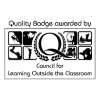
Both GCSE and A-Level students can learn about the Rise of Nazism with a visit to Munich, the capital of the Nazi movement and the place where it all began. You’ll follow in the footsteps of Hitler and early Nazis to discover more about the origins and the rise to power of the Nazi party.
Use our sample itinerary to help picture what your trip could look like. Our itineraries are flexible, visits and timings will be planned based on your needs.
This museum informs visitors about the background, progression and repercussions of the trials, at the original location where they were held. Selected historical exhibits such as parts of the original dock, as well as historical audio tapes and films, convey a vivid impression of events at the Nuremberg Trials.
We can include specific visits in your itinerary, additional visits can be added based on the trip length and needs of the curriculum or teacher.
Get A QuoteWe can include specific visits in your itinerary, additional visits can be added based on the trip length and needs of the curriculum or teacher.
Get A QuoteAt WST the customer is at the heart of everything we do. A strong set of values runs right from the core of our business. We believe that this is what makes us stand out from the crowd.






Please select a type of trip below:
Need to speak to an expert?
Need to speak to an expert?
Need to speak to an expert?
Your Enquiry has been received by , our school trips provider.
We’ll get back to you within 24 hours via your email or by phone on .
We have been operating school tours for over 35 years so we know a thing or two about planning a school trip. One of the benefits of this is that we have an abundance of knowledge and supporting documents to share with you. In our resources area you will find everything you need for your school trip planning:
Featured Resource
You need to know you can book with a tour operator who has everything covered for you.
This guide will assist you completing your own risk assessments covering areas such as:
Our team of destination specialists will help you find the perfect trip for your group's study needs.